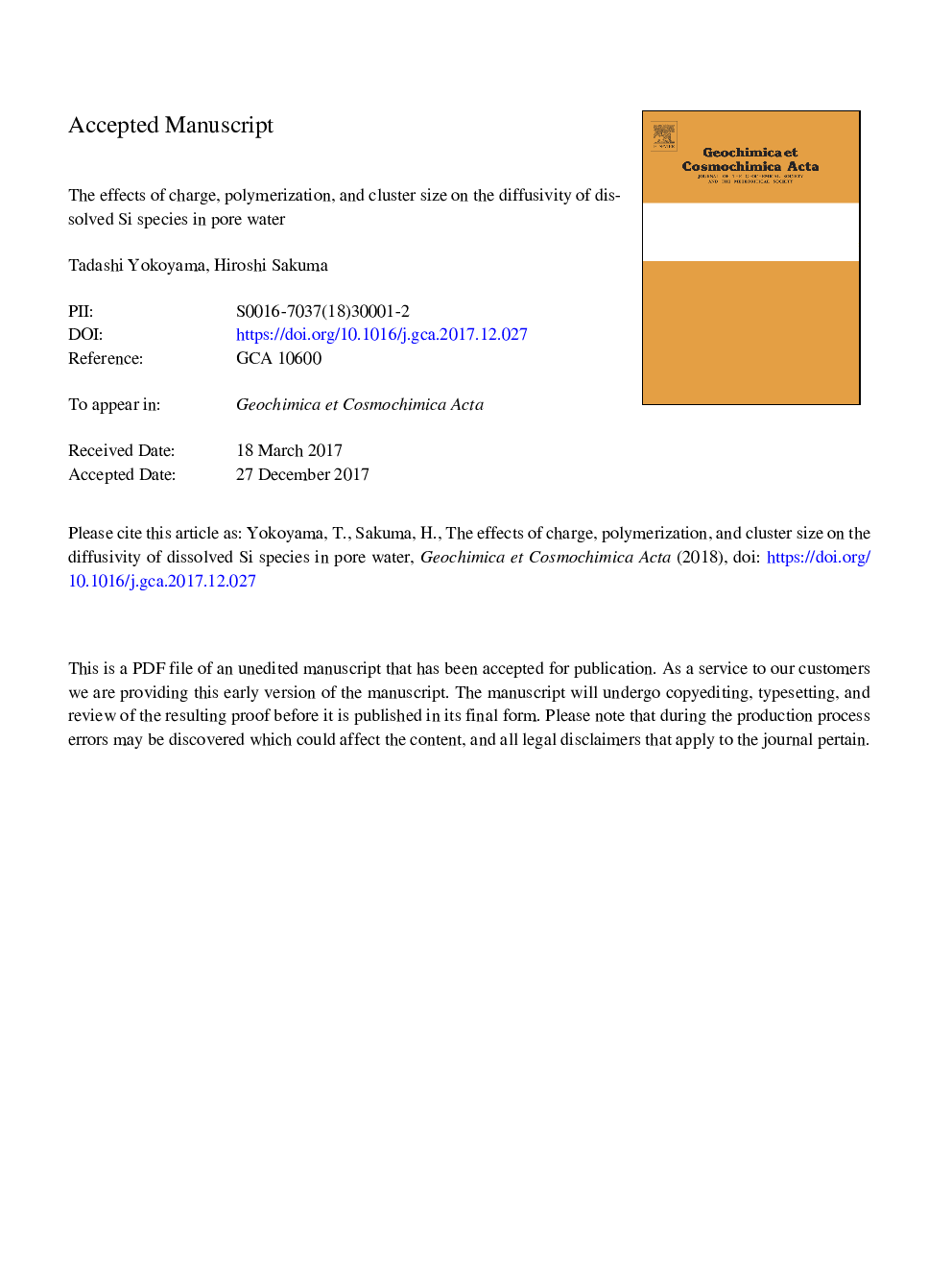| Article ID | Journal | Published Year | Pages | File Type |
|---|---|---|---|---|
| 8910883 | Geochimica et Cosmochimica Acta | 2018 | 34 Pages |
Abstract
Silicon (Si) is the most abundant cation in crustal rocks. The charge and degree of polymerization of dissolved Si significantly change depending on solution pH and Si concentration. We used molecular dynamics (MD) simulations to predict the self-diffusion coefficients of dissolved Si, DSi, for 15 monomeric and polymeric species at ambient temperature. The results showed that DSi decreased with increasing negative charge and increasing degree of polymerization. The relationship between DSi and charge (Z) can be expressed by DSi/10â6â¯=â¯2.0â¯+â¯9.8e0.47Z, and that between DSi and number of polymerization (NSi) by DSi/10â6â¯=â¯9.7/NSi0.56. The results also revealed that multiple Si molecules assembled into a cluster and D decreased as the cluster size increased. Experiments to evaluate the diffusivity of Si in pore water revealed that the diffusion coefficient decreased with increasing Si concentration, a result consistent with the MD simulations. Simulation results can now be used to quantitatively assess water-rock interactions and water-concrete reactions over a wide range of environmentally relevant conditions.
Related Topics
Physical Sciences and Engineering
Earth and Planetary Sciences
Geochemistry and Petrology
Authors
Tadashi Yokoyama, Hiroshi Sakuma,
